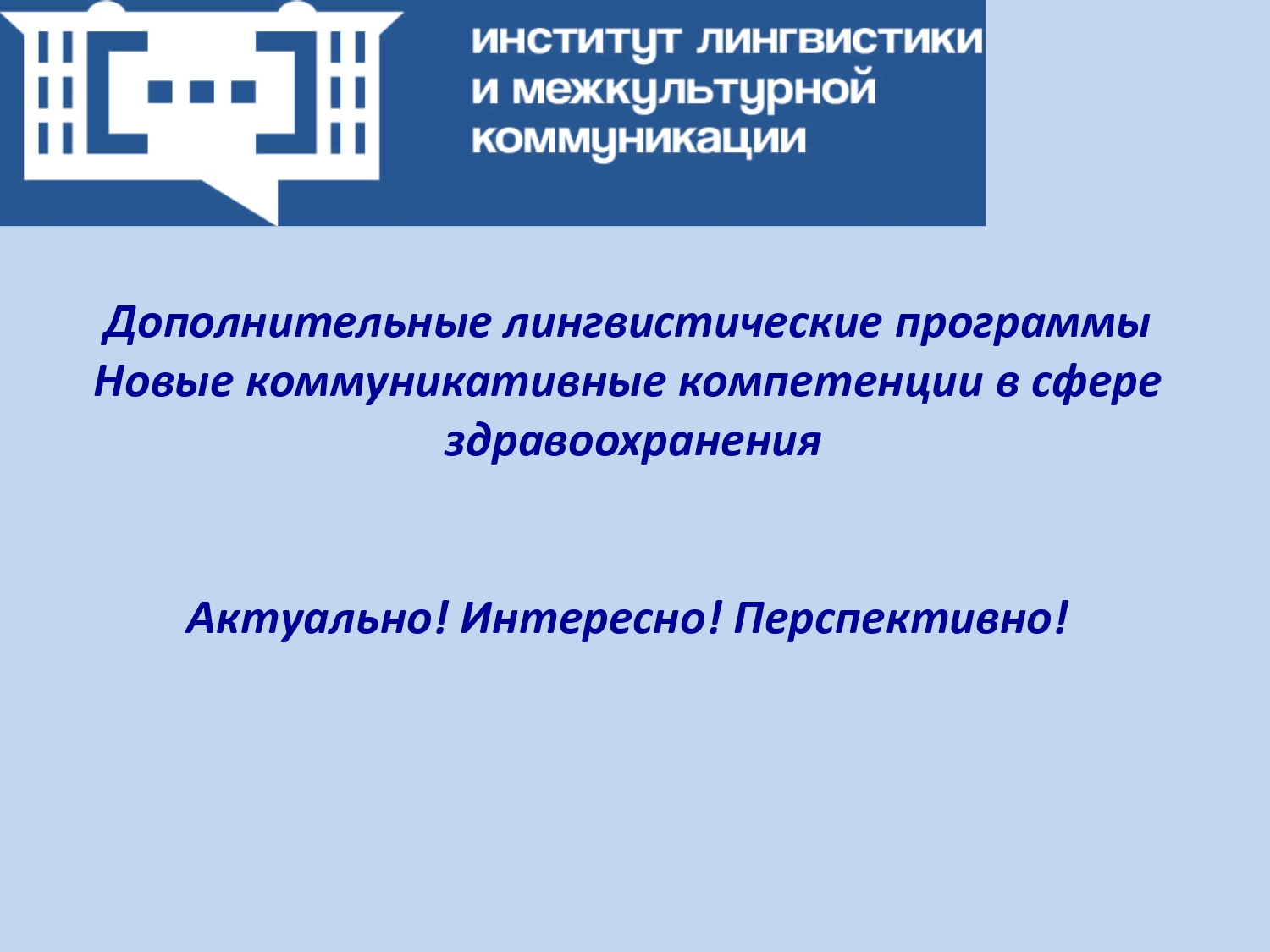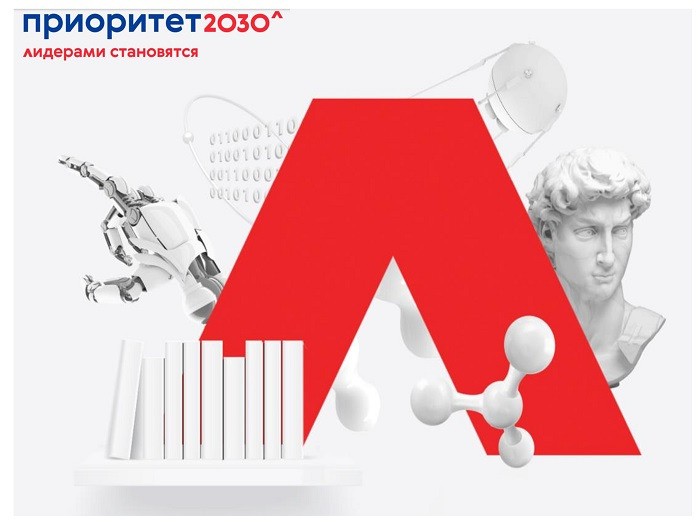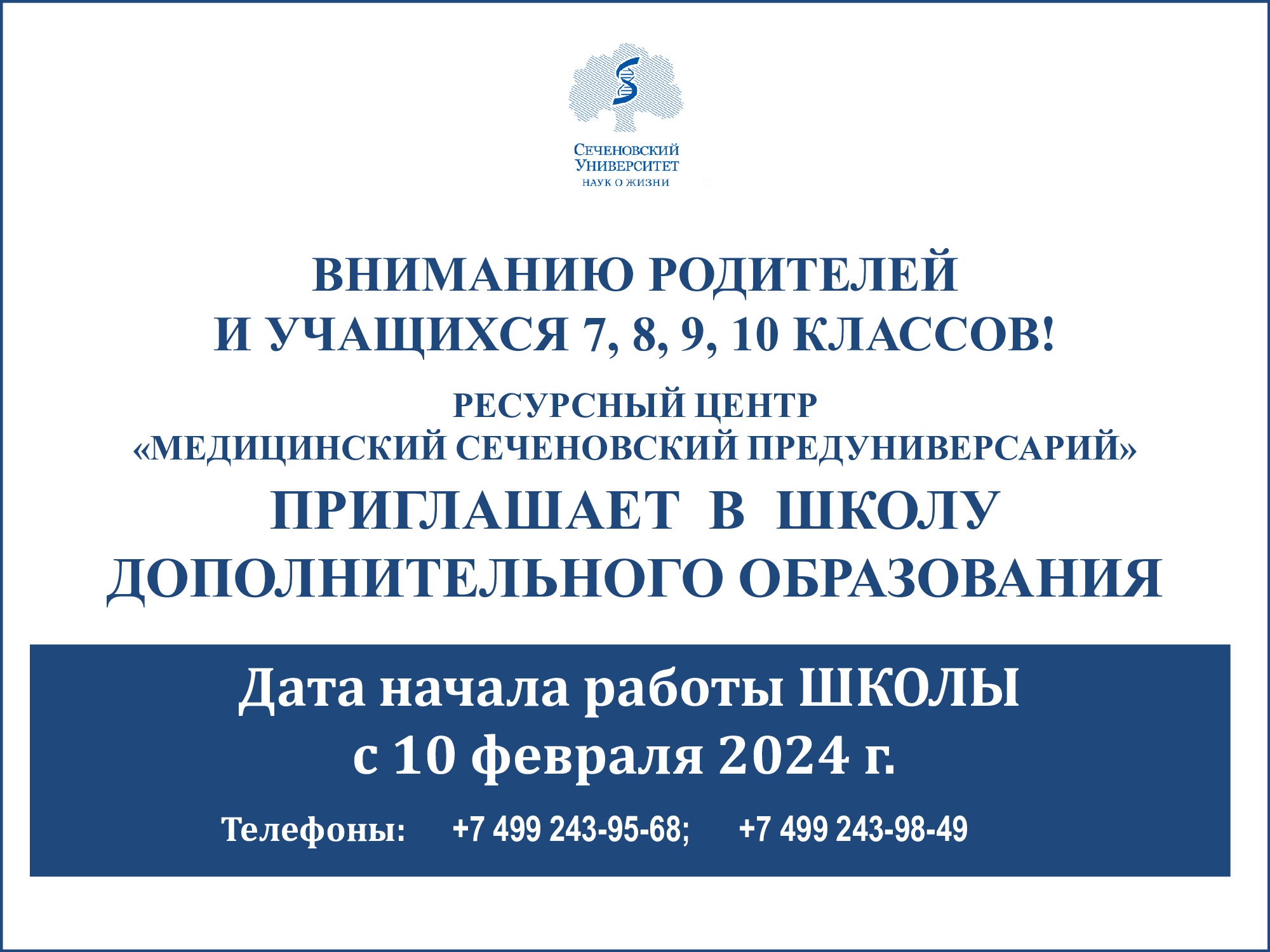|
Low molecular weight heparin and 28-day mortality among patients with coronavirus disease 2019: A cohort study in the early epidemic era
|
01.02.2021 |
Qin W.
Dong F.
Zhang Z.
Hu B.
Chen S.
Zhu Z.
Li F.
Wang X.
Zhang Y.
Wang Y.
Zhen K.
Wang J.
Elalamy I.
Li C.
Zhai Z.
Davidson B.L.
Wang C.
|
Thrombosis Research |
10.1016/j.thromres.2020.11.020 |
0 |
Ссылка
|
|
Zn-doping of silicate and hydroxyapatite-based cements: Dentin mechanobiology and bioactivity
|
01.02.2021 |
Toledano M.
Osorio R.
Vallecillo-Rivas M.
Osorio E.
Lynch C.D.
Aguilera F.S.
Toledano R.
Sauro S.
|
Journal of the Mechanical Behavior of Biomedical Materials |
10.1016/j.jmbbm.2020.104232 |
0 |
Ссылка
© 2020 Elsevier Ltd The objective was to state zinc contribution in the effectiveness of novel zinc-doped dentin cements to achieve dentin remineralization, throughout a literature or narrative exploratory review. Literature search was conducted using electronic databases, such as PubMed, MEDLINE, DIMDI, Embase, Scopus and Web of Science. Both zinc-doping silicate and hydroxyapatite-based cements provoked an increase of both bioactivity and intrafibrillar mineralization of dentin. Zinc-doped hydroxyapatite-based cements (oxipatite) also induced an increase in values of dentin nano-hardness, Young's modulus and dentin resistance to deformation. From Raman analyses, it was stated higher intensity of phosphate peaks and crystallinity as markers of dentin calcification, in the presence of zinc. Zinc-based salt formations produced low microleakage and permeability values with hermetically sealed tubules at radicular dentin. Dentin treated with oxipatite attained preferred crystal grain orientation with polycrystalline lattices. Thereby, oxipatite mechanically reinforced dentin structure, by remineralization. Dentin treated with oxipatite produced immature crystallites formations, accounting for high hydroxyapatite solubility, instability and enhanced remineralizing activity.
Читать
тезис
|
|
Zn-doping of silicate and hydroxyapatite-based cements: Dentin mechanobiology and bioactivity
|
01.02.2021 |
Toledano M.
Osorio R.
Vallecillo-Rivas M.
Osorio E.
Lynch C.D.
Aguilera F.S.
Toledano R.
Sauro S.
|
Journal of the Mechanical Behavior of Biomedical Materials |
10.1016/j.jmbbm.2020.104232 |
0 |
Ссылка
© 2020 Elsevier Ltd The objective was to state zinc contribution in the effectiveness of novel zinc-doped dentin cements to achieve dentin remineralization, throughout a literature or narrative exploratory review. Literature search was conducted using electronic databases, such as PubMed, MEDLINE, DIMDI, Embase, Scopus and Web of Science. Both zinc-doping silicate and hydroxyapatite-based cements provoked an increase of both bioactivity and intrafibrillar mineralization of dentin. Zinc-doped hydroxyapatite-based cements (oxipatite) also induced an increase in values of dentin nano-hardness, Young's modulus and dentin resistance to deformation. From Raman analyses, it was stated higher intensity of phosphate peaks and crystallinity as markers of dentin calcification, in the presence of zinc. Zinc-based salt formations produced low microleakage and permeability values with hermetically sealed tubules at radicular dentin. Dentin treated with oxipatite attained preferred crystal grain orientation with polycrystalline lattices. Thereby, oxipatite mechanically reinforced dentin structure, by remineralization. Dentin treated with oxipatite produced immature crystallites formations, accounting for high hydroxyapatite solubility, instability and enhanced remineralizing activity.
Читать
тезис
|
|
Codelivery of STAT3 and PD-L1 siRNA by hyaluronate-TAT trimethyl/thiolated chitosan nanoparticles suppresses cancer progression in tumor-bearing mice
|
01.02.2021 |
Bastaki S.
Aravindhan S.
Ahmadpour Saheb N.
Afsari Kashani M.
Dorofeev A.E.
Karoon Kiani F.
Jahandideh H.
Beigi Dargani F.
Aksoun M.
Nikkhoo A.
Masjedi A.
Mahmoodpoor A.
Ahmadi M.
Dolati S.
Namvar S.
Jadidi-Niaragh F.
|
Life Sciences |
10.1016/j.lfs.2020.118847 |
0 |
Ссылка
© 2020 Immunotherapy methods using potential tumor microenvironment modulators have elicited durable therapeutic responses in cancer treatment. Immune checkpoint molecule programmed cell death-ligand 1 (PD-L1) and oncogenic transcription factor STAT3 (signal transducer and activator of transcription-3) assigned as inhibitory targets of our study and particular delivery system designed to deliver small interfering RNAs (siRNAs) to silence the targeted genes. Generated trimethyl chitosan (TMC) and thiolated chitosan (TC) nanoparticles (NPs) conjugated with HIV-1-derived TAT peptide and HA (hyaluronic acid) exhibited eligible physicochemical characteristics, notable siRNA encapsulation, serum stability, non-toxicity, controlled siRNA release, and extensive cellular uptake by cancer cells. Dual inhibition with STAT3/PD-L1 siRNA-loaded HA-TAT-TMC-TC NPs led to promising results, including significant downregulation of PD-L1 and STAT3 genes, striking suppressive effects on proliferation, migration, and angiogenesis of breast and melanoma cancer cell lines, and restrained tumor growth in vivo. These findings infer the capability of HA-TAT-TMC-TC NPs containing STAT3/PD-L1 siRNAs as a novel tumor-suppressive candidate in cancer treatment.
Читать
тезис
|
|
Alterations in Blood Metabolic Parameters of Immature Mice After Subchronic Exposure to Cobalt Chloride
|
01.02.2021 |
Vladov I.
Petrova E.
Pavlova E.
Tinkov A.A.
Ajsuvakova O.P.
Skalny A.V.
Gluhcheva Y.
|
Biological Trace Element Research |
10.1007/s12011-020-02161-4 |
0 |
Ссылка
© 2020, Springer Science+Business Media, LLC, part of Springer Nature. The wide use of cobalt (Co) in food, industry, and medical devices requires full elucidation of its biological effects on tissues and organs. The aim was to assess serum metabolic alterations in immature mice after subchronic exposure to CoCl2. Pregnant ICR mice were subjected to a daily dose of 75 mg cobalt chloride/kg body weight (CoCl2x6H2O) 2–3 days before they gave birth, and treatment continued until days 25 and 30 after delivery. The compound was dissolved in and obtained with regular tap water. ICP-DRC-MS analysis showed significantly elevated serum Co2+ and diverse alterations in metabolic parameters of 25- and 30-day-old pups after exposure to CoCl2. Cholesterol and urea levels were significantly elevated in day 25 mice while HDL-C and LDL-C were reduced. In day 30, Co-exposed mice LDL-C and triglycerides were significantly increased while the total cholesterol level remained unchanged. Alkaline phosphatase was significantly reduced in day 25 Co-exposed mice. Blood glucose level of Co-exposed mice remained close to the untreated controls. Total protein content was slightly increased in day 30 mice. Co-exposure reduced albumin content and albumin/globulin ratio but increased significantly globulin content. Co administration showed strong correlation with cholesterol, urea, and HDL-C in both day 25 and 30 mice. Inverse correlation was found with alkaline phosphatase and albumin for day 25 and with triglycerides, globulin, and total protein content in day 30 Co-exposed mice. Subchronic CoCl2 exposure of immature mice induced significant changes in key metabolic parameters suggesting possible further disturbances in energy metabolism, osteogenesis, and reproduction.
Читать
тезис
|
|
Detecting a subendocardial infarction in a child with coronary anomaly by three-dimensional late gadolinium enhancement MRI using compressed sensing
|
01.02.2021 |
Suekuni H.
Kido T.
Shiraishi Y.
Takimoto Y.
Hirai K.
Nakamura M.
Komori Y.
Ohmoto K.
Mochizuki T.
Kido T.
|
Radiology Case Reports |
10.1016/j.radcr.2020.11.048 |
0 |
Ссылка
© 2020 Three-dimensional high-resolution late gadolinium enhancement (3D HR LGE) magnetic resonance imaging (MRI) using compressed sensing can help detect small myocardial infarcts. We discuss the case of an 11-year-old child with an anomalous aortic origin of the left coronary artery. Since he was suspected to have coronary stenosis due to anomalous aortic origin of the left coronary artery, cardiovascular MRI, including conventional two-dimensional (2D) LGE MRI and HR 3D LGE MRI, was conducted. Myocardial scars were not clearly observed via 2D LGE MRI; however, 3D HR MRI revealed subendocardial infarction of the anteroseptal wall, which corresponded to the left coronary artery. By applying the compressed sensing technique, 3D HR LGE, MRI enables a detailed assessment of small myocardial infarcts in a clinically feasible scan time.
Читать
тезис
|
|
Potential immuno-nanomedicine strategies to fight COVID-19 like pulmonary infections
|
01.02.2021 |
Bonam S.R.
Kotla N.G.
Bohara R.A.
Rochev Y.
Webster T.J.
Bayry J.
|
Nano Today |
10.1016/j.nantod.2020.101051 |
0 |
Ссылка
© 2020 Elsevier Ltd COVID-19, coronavirus disease 2019, caused by the severe acute respiratory syndrome coronavirus 2 (SARS-CoV-2) has become a pandemic. At the time of writing this (October 14, 2020), more than 38.4 million people have become affected, and 1.0 million people have died across the world. The death rate is undoubtedly correlated with the cytokine storm and other pathological pulmonary characteristics, as a result of which the lungs cannot provide sufficient oxygen to the body's vital organs. While diversified drugs have been tested as a first line therapy, the complexity of fatal cases has not been reduced so far, and the world is looking for a treatment to combat the virus. However, to date, and despite such promise, we have received very limited information about the potential of nanomedicine to fight against COVID-19 or as an adjunct therapy in the treatment regimen. Over the past two decades, various therapeutic strategies, including direct-acting antiviral drugs, immunomodulators, a few non-specific drugs (simple to complex), have been explored to treat Acute Respiratory Distress Syndrome (ARDS), Severe Acute Respiratory Syndrome (SARS) and Middle East Respiratory Syndrome (MERS), influenza, and sometimes the common flu, thus, correlating and developing specific drugs centric to COVID-19 is possible. This review article focuses on the pulmonary pathology caused by SARS-CoV-2 and other viral pathogens, highlighting possible nanomedicine therapeutic strategies that should be further tested immediately.
Читать
тезис
|
|
Selenium, Zinc, Chromium, and Vanadium Levels in Serum, Hair, and Urine Samples of Obese Adults Assessed by Inductively Coupled Plasma Mass Spectrometry
|
01.02.2021 |
Tinkov A.A.
Skalnaya M.G.
Ajsuvakova O.P.
Serebryansky E.P.
Chao J.C.J.
Aschner M.
Skalny A.V.
|
Biological Trace Element Research |
10.1007/s12011-020-02177-w |
4 |
Ссылка
© 2020, Springer Science+Business Media, LLC, part of Springer Nature. The objective of this study was to investigate of selenium (Se), zinc (Zn), chromium (Cr), and vanadium (V) levels in blood serum, hair, and urine of adult obese patients. A total of 199 lean and 196 obese subjects were enrolled in the study. Serum, hair, and urinary metal and metalloid analysis were performed by inductively coupled plasma mass spectrometry at NexION 300D (PerkinElmer Inc., USA). The results established that obese subjects were characterized by 47% and 30% lower serum Cr and V levels compared with controls, respectively, whereas serum Se levels exceeded control values by 9%. In contrast, hair Cr, Se, and V content in obese subjects exceeded the control values by 51%, 21%, and 50%, respectively. In turn, hair Zn levels were found to be significantly lower by 11% compared with the lean control values. In urine, the levels of V and Zn were found to be 30% and 18% higher in obese patients. Prevalence of hypertension in obese subjects was associated with a trend for impaired Se and Zn levels. In a regression model adjusted for age, gender, hypertension, atherosclerosis, and glucose intolerance, serum Cr, V, and hair Zn were inversely associated with body mass index (BMI), whereas hair Se was considered as the positive predictor. Our data allow proposing that the observed alterations may at least partially contribute to metabolic disturbances in obesity. In turn, monitoring of Se exposure in a well-nourished adult population is required to reduce its potential contribution to obesity.
Читать
тезис
|
|
Thyroid and androgen receptor signaling are antagonized by μ-Crystallin in prostate cancer
|
01.02.2021 |
Aksoy O.
Pencik J.
Hartenbach M.
Moazzami A.A.
Schlederer M.
Balber T.
Varady A.
Philippe C.
Baltzer P.A.
Mazumder B.
Whitchurch J.B.
Roberts C.J.
Haitel A.
Herac M.
Susani M.
Mitterhauser M.
Marculescu R.
Stangl-Kremser J.
Hassler M.R.
Kramer G.
Shariat S.F.
Turner S.D.
Tichy B.
Oppelt J.
Pospisilova S.
Hartenbach S.
Tangermann S.
Egger G.
Neubauer H.A.
Moriggl R.
Culig Z.
Greiner G.
Hoermann G.
Hacker M.
Heery D.M.
Merkel O.
Kenner L.
|
International Journal of Cancer |
10.1002/ijc.33332 |
0 |
Ссылка
© 2020 The Authors. International Journal of Cancer published by John Wiley & Sons Ltd on behalf of Union for International Cancer Control. Androgen deprivation therapy (ADT) remains a key approach in the treatment of prostate cancer (PCa). However, PCa inevitably relapses and becomes ADT resistant. Besides androgens, there is evidence that thyroid hormone thyroxine (T4) and its active form 3,5,3′-triiodo-L-thyronine (T3) are involved in the progression of PCa. Epidemiologic evidences show a higher incidence of PCa in men with elevated thyroid hormone levels. The thyroid hormone binding protein μ-Crystallin (CRYM) mediates intracellular thyroid hormone action by sequestering T3 and blocks its binding to cognate receptors (TRα/TRβ) in target tissues. We show in our study that low CRYM expression levels in PCa patients are associated with early biochemical recurrence and poor prognosis. Moreover, we found a disease stage-specific expression of CRYM in PCa. CRYM counteracted thyroid and androgen signaling and blocked intracellular choline uptake. CRYM inversely correlated with [18F]fluoromethylcholine (FMC) levels in positron emission tomography/magnetic resonance imaging of PCa patients. Our data suggest CRYM as a novel antagonist of T3- and androgen-mediated signaling in PCa. The role of CRYM could therefore be an essential control mechanism for the prevention of aggressive PCa growth.
Читать
тезис
|
|
Alterations in Blood Metabolic Parameters of Immature Mice After Subchronic Exposure to Cobalt Chloride
|
01.02.2021 |
Vladov I.
Petrova E.
Pavlova E.
Tinkov A.A.
Ajsuvakova O.P.
Skalny A.V.
Gluhcheva Y.
|
Biological Trace Element Research |
10.1007/s12011-020-02161-4 |
0 |
Ссылка
© 2020, Springer Science+Business Media, LLC, part of Springer Nature. The wide use of cobalt (Co) in food, industry, and medical devices requires full elucidation of its biological effects on tissues and organs. The aim was to assess serum metabolic alterations in immature mice after subchronic exposure to CoCl2. Pregnant ICR mice were subjected to a daily dose of 75 mg cobalt chloride/kg body weight (CoCl2x6H2O) 2–3 days before they gave birth, and treatment continued until days 25 and 30 after delivery. The compound was dissolved in and obtained with regular tap water. ICP-DRC-MS analysis showed significantly elevated serum Co2+ and diverse alterations in metabolic parameters of 25- and 30-day-old pups after exposure to CoCl2. Cholesterol and urea levels were significantly elevated in day 25 mice while HDL-C and LDL-C were reduced. In day 30, Co-exposed mice LDL-C and triglycerides were significantly increased while the total cholesterol level remained unchanged. Alkaline phosphatase was significantly reduced in day 25 Co-exposed mice. Blood glucose level of Co-exposed mice remained close to the untreated controls. Total protein content was slightly increased in day 30 mice. Co-exposure reduced albumin content and albumin/globulin ratio but increased significantly globulin content. Co administration showed strong correlation with cholesterol, urea, and HDL-C in both day 25 and 30 mice. Inverse correlation was found with alkaline phosphatase and albumin for day 25 and with triglycerides, globulin, and total protein content in day 30 Co-exposed mice. Subchronic CoCl2 exposure of immature mice induced significant changes in key metabolic parameters suggesting possible further disturbances in energy metabolism, osteogenesis, and reproduction.
Читать
тезис
|
|
Detecting a subendocardial infarction in a child with coronary anomaly by three-dimensional late gadolinium enhancement MRI using compressed sensing
|
01.02.2021 |
Suekuni H.
Kido T.
Shiraishi Y.
Takimoto Y.
Hirai K.
Nakamura M.
Komori Y.
Ohmoto K.
Mochizuki T.
Kido T.
|
Radiology Case Reports |
10.1016/j.radcr.2020.11.048 |
0 |
Ссылка
© 2020 Three-dimensional high-resolution late gadolinium enhancement (3D HR LGE) magnetic resonance imaging (MRI) using compressed sensing can help detect small myocardial infarcts. We discuss the case of an 11-year-old child with an anomalous aortic origin of the left coronary artery. Since he was suspected to have coronary stenosis due to anomalous aortic origin of the left coronary artery, cardiovascular MRI, including conventional two-dimensional (2D) LGE MRI and HR 3D LGE MRI, was conducted. Myocardial scars were not clearly observed via 2D LGE MRI; however, 3D HR MRI revealed subendocardial infarction of the anteroseptal wall, which corresponded to the left coronary artery. By applying the compressed sensing technique, 3D HR LGE, MRI enables a detailed assessment of small myocardial infarcts in a clinically feasible scan time.
Читать
тезис
|
|
Potential immuno-nanomedicine strategies to fight COVID-19 like pulmonary infections
|
01.02.2021 |
Bonam S.R.
Kotla N.G.
Bohara R.A.
Rochev Y.
Webster T.J.
Bayry J.
|
Nano Today |
10.1016/j.nantod.2020.101051 |
0 |
Ссылка
© 2020 Elsevier Ltd COVID-19, coronavirus disease 2019, caused by the severe acute respiratory syndrome coronavirus 2 (SARS-CoV-2) has become a pandemic. At the time of writing this (October 14, 2020), more than 38.4 million people have become affected, and 1.0 million people have died across the world. The death rate is undoubtedly correlated with the cytokine storm and other pathological pulmonary characteristics, as a result of which the lungs cannot provide sufficient oxygen to the body's vital organs. While diversified drugs have been tested as a first line therapy, the complexity of fatal cases has not been reduced so far, and the world is looking for a treatment to combat the virus. However, to date, and despite such promise, we have received very limited information about the potential of nanomedicine to fight against COVID-19 or as an adjunct therapy in the treatment regimen. Over the past two decades, various therapeutic strategies, including direct-acting antiviral drugs, immunomodulators, a few non-specific drugs (simple to complex), have been explored to treat Acute Respiratory Distress Syndrome (ARDS), Severe Acute Respiratory Syndrome (SARS) and Middle East Respiratory Syndrome (MERS), influenza, and sometimes the common flu, thus, correlating and developing specific drugs centric to COVID-19 is possible. This review article focuses on the pulmonary pathology caused by SARS-CoV-2 and other viral pathogens, highlighting possible nanomedicine therapeutic strategies that should be further tested immediately.
Читать
тезис
|
|
Selenium, Zinc, Chromium, and Vanadium Levels in Serum, Hair, and Urine Samples of Obese Adults Assessed by Inductively Coupled Plasma Mass Spectrometry
|
01.02.2021 |
Tinkov A.A.
Skalnaya M.G.
Ajsuvakova O.P.
Serebryansky E.P.
Chao J.C.J.
Aschner M.
Skalny A.V.
|
Biological Trace Element Research |
10.1007/s12011-020-02177-w |
4 |
Ссылка
© 2020, Springer Science+Business Media, LLC, part of Springer Nature. The objective of this study was to investigate of selenium (Se), zinc (Zn), chromium (Cr), and vanadium (V) levels in blood serum, hair, and urine of adult obese patients. A total of 199 lean and 196 obese subjects were enrolled in the study. Serum, hair, and urinary metal and metalloid analysis were performed by inductively coupled plasma mass spectrometry at NexION 300D (PerkinElmer Inc., USA). The results established that obese subjects were characterized by 47% and 30% lower serum Cr and V levels compared with controls, respectively, whereas serum Se levels exceeded control values by 9%. In contrast, hair Cr, Se, and V content in obese subjects exceeded the control values by 51%, 21%, and 50%, respectively. In turn, hair Zn levels were found to be significantly lower by 11% compared with the lean control values. In urine, the levels of V and Zn were found to be 30% and 18% higher in obese patients. Prevalence of hypertension in obese subjects was associated with a trend for impaired Se and Zn levels. In a regression model adjusted for age, gender, hypertension, atherosclerosis, and glucose intolerance, serum Cr, V, and hair Zn were inversely associated with body mass index (BMI), whereas hair Se was considered as the positive predictor. Our data allow proposing that the observed alterations may at least partially contribute to metabolic disturbances in obesity. In turn, monitoring of Se exposure in a well-nourished adult population is required to reduce its potential contribution to obesity.
Читать
тезис
|
|
Thyroid and androgen receptor signaling are antagonized by μ-Crystallin in prostate cancer
|
01.02.2021 |
Aksoy O.
Pencik J.
Hartenbach M.
Moazzami A.A.
Schlederer M.
Balber T.
Varady A.
Philippe C.
Baltzer P.A.
Mazumder B.
Whitchurch J.B.
Roberts C.J.
Haitel A.
Herac M.
Susani M.
Mitterhauser M.
Marculescu R.
Stangl-Kremser J.
Hassler M.R.
Kramer G.
Shariat S.F.
Turner S.D.
Tichy B.
Oppelt J.
Pospisilova S.
Hartenbach S.
Tangermann S.
Egger G.
Neubauer H.A.
Moriggl R.
Culig Z.
Greiner G.
Hoermann G.
Hacker M.
Heery D.M.
Merkel O.
Kenner L.
|
International Journal of Cancer |
10.1002/ijc.33332 |
0 |
Ссылка
© 2020 The Authors. International Journal of Cancer published by John Wiley & Sons Ltd on behalf of Union for International Cancer Control. Androgen deprivation therapy (ADT) remains a key approach in the treatment of prostate cancer (PCa). However, PCa inevitably relapses and becomes ADT resistant. Besides androgens, there is evidence that thyroid hormone thyroxine (T4) and its active form 3,5,3′-triiodo-L-thyronine (T3) are involved in the progression of PCa. Epidemiologic evidences show a higher incidence of PCa in men with elevated thyroid hormone levels. The thyroid hormone binding protein μ-Crystallin (CRYM) mediates intracellular thyroid hormone action by sequestering T3 and blocks its binding to cognate receptors (TRα/TRβ) in target tissues. We show in our study that low CRYM expression levels in PCa patients are associated with early biochemical recurrence and poor prognosis. Moreover, we found a disease stage-specific expression of CRYM in PCa. CRYM counteracted thyroid and androgen signaling and blocked intracellular choline uptake. CRYM inversely correlated with [18F]fluoromethylcholine (FMC) levels in positron emission tomography/magnetic resonance imaging of PCa patients. Our data suggest CRYM as a novel antagonist of T3- and androgen-mediated signaling in PCa. The role of CRYM could therefore be an essential control mechanism for the prevention of aggressive PCa growth.
Читать
тезис
|
|
Perioperative Dexmedetomidine Supplement Decreases Delirium Incidence After Adult Cardiac Surgery: A Randomized, Double-Blind, Controlled Study
|
01.02.2021 |
Likhvantsev V.V.
Landoni G.
Grebenchikov O.A.
Ovezov A.M.
Skripkin Y.V.
Lembo R.
Gaevskiy D.I.
Tereshina A.A.
Yavorovskiy A.G.
|
Journal of Cardiothoracic and Vascular Anesthesia |
10.1053/j.jvca.2020.02.035 |
0 |
Ссылка
© 2020 Elsevier Inc. Objective: Conflicting data exist on the effect of dexmedetomidine on delirium. For the present study, a randomized trial was performed to investigate the effect of perioperative dexmedetomidine on the rate of postoperative delirium after cardiac surgery. Design: A randomized controlled trial. Setting: University hospital. Participants: Patients (n = 169) undergoing elective cardiac surgery (coronary artery bypass graft surgery, valve surgery, or combined surgery) with cardiopulmonary bypass. Interventions: Patients received a sevoflurane-based general anesthesia and were randomly assigned 1:1 to receive a dexmedetomidine infusion that started in the operating room (0.7 μg/kg/h) and continued into the intensive care unit (0.4 μg/kg/h) or an equivolume infusion of placebo. Measurements and Main Results: A decrease in the rate of delirium in the dexmedetomidine group compared with the placebo group was demonstrated (6 of 84 [7.1%] v 16 of 85 [18.8%]; p = 0.02; odds ratio [OR] 0.33 [95% confidence interval {CI} 0.12-0.90]). Reduced intensive care unit and hospital lengths of stay also were observed (18 [18-22] hours v 22 [18-39] hours; p = 0.002 and 17 [7-20] days v 19 [8-21] days; p = 0.04, respectively). Mortality at 30 days was 2 (2.4%) in both groups. On multivariate analysis, only dexmedetomidine administration (OR 0.24 [95% CI 0.08-0.74]) and cardiopulmonary bypass time (OR 1.02 [95% CI 1.01-1.03] for increases of 1 min) were independent predictors of delirium development. Conclusions: Dexmedetomidine administered during and after general anesthesia for cardiac surgery with cardiopulmonary bypass decreased the rate of postoperative delirium and intensive care unit and hospital lengths of stay.
Читать
тезис
|
|
Corticosteroids for Patients With Coronavirus Disease 2019 (COVID-19) With Different Disease Severity: A Meta-Analysis of Randomized Clinical Trials
|
01.02.2021 |
Pasin L.
Navalesi P.
Zangrillo A.
Kuzovlev A.
Likhvantsev V.
Hajjar L.A.
Fresilli S.
Lacerda M.V.G.
Landoni G.
|
Journal of Cardiothoracic and Vascular Anesthesia |
10.1053/j.jvca.2020.11.057 |
0 |
Ссылка
© 2020 Elsevier Inc. Objectives: Efficacy and safety of corticosteroids in patients with 2019-nCoV (novel coronavirus 2019) infection still are debated. Because large randomized clinical trials (RCTs) and a well-conducted meta-analysis on the use of corticosteroids, focused on patients with coronavirus disease (COVID-19) in intensive care units, recently were published, a meta-analysis of RCTs on corticosteroids therapy in patients with different disease severity was performed to evaluate the effect on survival. Design: A meta-analyses of RCTs was performed. Setting: Patients admitted to hospital. Participants: Patients with coronavirus disease. Interventions: Administration of corticosteroids. Measurements and Main Results: A search was performed for RCTs of adult patients with acute hypoxemic failure related to 2019-nCoV infection who received corticosteroids versus any comparator. The primary endpoint was mortality rate. Five RCTs involving 7,692 patients were included. Overall mortality of patients treated with corticosteroids was slightly but significantly lower than mortality of controls (26% v 28%, relative risk {RR} = 0.89 [95% confidence interval {CI} 0.82-0.96], p = 0.003). The same beneficial effect was found in the subgroup of patients requiring mechanical ventilation (RR = 0.85 [95% CI 0.72-1.00], p = 0.05 number needed to treat {NNT} = 19). Remarkably, corticosteroids increased mortality in the subgroup of patients not requiring oxygen (17% v 13%, RR = 1.23 [95% CI 1.00-1.62], p = 0.05 number needed to harm {NNH} = 29). Tests for comparison between mechanically ventilated subgroups and those not requiring oxygen confirmed that treatment with corticosteroids had a statistically significant different effect on survival. Patients treated with corticosteroids had a significantly lower risk of need for mechanical ventilation. Conclusions: Corticosteroids may be considered in severe critically ill patients with COVID-19 but must be discouraged in patients not requiring oxygen therapy. Urgently, further trials are warranted before implementing this treatment worldwide.
Читать
тезис
|
|
An efficient ultrasonic assisted reverse micelle synthesis route for Fe<inf>3</inf>O<inf>4</inf>@Cu-MOF/core-shell nanostructures and its antibacterial activities
|
01.02.2021 |
Azizabadi O.
Akbarzadeh F.
Danshina S.
Chauhan N.P.S.
Sargazi G.
|
Journal of Solid State Chemistry |
10.1016/j.jssc.2020.121897 |
0 |
Ссылка
© 2020 Elsevier Inc. In the present study, the novel shell nanostructures of Cu-MOF compound were synthesized for the first time by effective, fast and controllable method of ultrasonic assisted reverse micelle. The Fe3O4 nanoparticle was used as core for improving the physicochemical properties and also the stability of these compounds. The results showed that Fe3O4@Cu-MOF/core-shell nanostructures have significant thermal stability compared to pure Cu-MOF samples. In fact, the TEM study verified the development of core shell nanostructures. The EDS with mapping has been applied to be sure about the existence of related elements in the final Fe3O4@Cu-MOF/core-shell nanostructure. The design of the fractional test was used to change the antibacterial properties of these compounds. This method of optimization generates structures with a high surface area that affect the antibacterial properties of the materials. Systematic studies applied in this study, as well as optimization processes, can be developed as a new strategy for controlling the physicochemical properties of the products. Fe3O4@Cu-MOF/core-shell nanostructures have shown reasonably good antibacterial activities against both Gram-positive and Gram-negative bacteria.
Читать
тезис
|
|
Virtual element methods for the three-field formulation of time-dependent linear poroelasticity
|
01.02.2021 |
Bürger R.
Kumar S.
Mora D.
Ruiz-Baier R.
Verma N.
|
Advances in Computational Mathematics |
10.1007/s10444-020-09826-7 |
0 |
Ссылка
© 2021, Springer Science+Business Media, LLC, part of Springer Nature. A virtual element discretisation for the numerical approximation of the three-field formulation of linear poroelasticity introduced in R. Oyarzúa and R. Ruiz-Baier, (SIAM J. Numer. Anal.54 2951–2973, 2016) is proposed. The treatment is extended to include also the transient case. Appropriate poroelasticity projector operators are introduced and they assist in deriving energy bounds for the time-dependent discrete problem. Under standard assumptions on the computational domain, optimal a priori error estimates are established. These estimates are valid independently of the values assumed by the dilation modulus and the specific storage coefficient, implying that the formulation is locking-free. Furthermore, the accuracy of the method is verified numerically through a set of computational tests.
Читать
тезис
|
|
Novel vaccines for allergen-specific immunotherapy
|
01.02.2021 |
Akinfenwa O.
Rodríguez-Domínguez A.
Vrtala S.
Valenta R.
Campana R.
|
Current opinion in allergy and clinical immunology |
10.1097/ACI.0000000000000706 |
0 |
Ссылка
Copyright © 2020 The Author(s). Published by Wolters Kluwer Health, Inc. PURPOSE OF REVIEW: Allergen-specific immunotherapy (AIT) is a highly economic, effective and disease-modifying form of allergy treatment but requires accurate prescription and monitoring. New molecular approaches are currently under development to improve AIT by reducing treatment-related side effects, cumbersome protocols and patients' compliance. We review the current advances regarding refined diagnosis for prescription and monitoring of AIT and the development of novel molecular vaccines for AIT. Finally, we discuss prophylactic application of AIT. RECENT FINDINGS: There is evidence that molecular allergy diagnosis not only assists in the prescription and monitoring of AIT but also allows a refined selection of patients to increase the likelihood of treatment success. New data regarding the effects of AIT treatment with traditional allergen extracts by alternative routes have become available. Experimental approaches for AIT, such as virus-like particles and cell-based treatments have been described. New results from clinical trials performed with recombinant hypoallergens and passive immunization with allergen-specific antibodies highlight the importance of allergen-specific IgG antibodies for the effect of AIT and indicate opportunities for preventive allergen-specific vaccination. SUMMARY: Molecular allergy diagnosis is useful for the prescription and monitoring of AIT and may improve the success of AIT. Results with molecular allergy vaccines and by passive immunization with allergen-specific IgG antibodies indicate the importance of allergen-specific IgG capable of blocking allergen recognition by IgE and IgE-mediated allergic inflammation as important mechanism for the success of AIT. New molecular vaccines may pave the road towards prophylactic allergen-specific vaccination.
Читать
тезис
|
|
Novel vaccines for allergen-specific immunotherapy
|
01.02.2021 |
Akinfenwa O.
Rodríguez-Domínguez A.
Vrtala S.
Valenta R.
Campana R.
|
Current opinion in allergy and clinical immunology |
10.1097/ACI.0000000000000706 |
0 |
Ссылка
Copyright © 2020 The Author(s). Published by Wolters Kluwer Health, Inc. PURPOSE OF REVIEW: Allergen-specific immunotherapy (AIT) is a highly economic, effective and disease-modifying form of allergy treatment but requires accurate prescription and monitoring. New molecular approaches are currently under development to improve AIT by reducing treatment-related side effects, cumbersome protocols and patients' compliance. We review the current advances regarding refined diagnosis for prescription and monitoring of AIT and the development of novel molecular vaccines for AIT. Finally, we discuss prophylactic application of AIT. RECENT FINDINGS: There is evidence that molecular allergy diagnosis not only assists in the prescription and monitoring of AIT but also allows a refined selection of patients to increase the likelihood of treatment success. New data regarding the effects of AIT treatment with traditional allergen extracts by alternative routes have become available. Experimental approaches for AIT, such as virus-like particles and cell-based treatments have been described. New results from clinical trials performed with recombinant hypoallergens and passive immunization with allergen-specific antibodies highlight the importance of allergen-specific IgG antibodies for the effect of AIT and indicate opportunities for preventive allergen-specific vaccination. SUMMARY: Molecular allergy diagnosis is useful for the prescription and monitoring of AIT and may improve the success of AIT. Results with molecular allergy vaccines and by passive immunization with allergen-specific IgG antibodies indicate the importance of allergen-specific IgG capable of blocking allergen recognition by IgE and IgE-mediated allergic inflammation as important mechanism for the success of AIT. New molecular vaccines may pave the road towards prophylactic allergen-specific vaccination.
Читать
тезис
|








